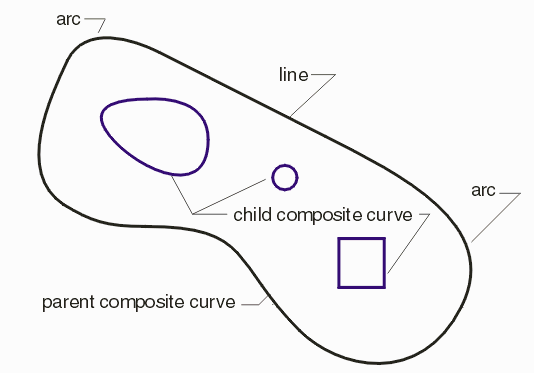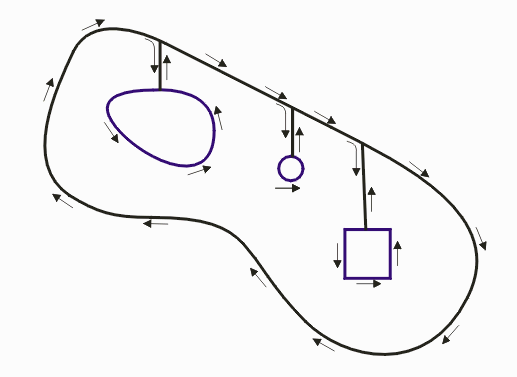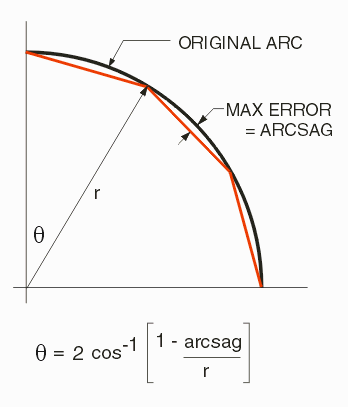An ODB++ surface is defined by a composite polyline that defines the outer composite curve followed by one or more children that represent "cutouts" from the outer polygon. This is a very elegant method of describing say a complete ground plane with many holes in it.

Unfortunately, the RS274X specification has no equivalent of the surface. Therefore the translator has to process this so that it can be represented in RS247X. The approach used is to "booleanize" the outer and inner areas and output a "re-entrant" polygon as shown below.

Breaking Arcs into Segments
The boolean computation only works on polygons -- not on arcs. Prior to booleanizing the surface, both inner and outer composite curves must have their arcs fractured. The user can control the smoothness of the approximation using the parameters arcres or arcsag.


